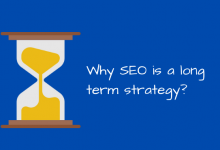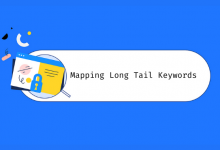What are Trends?

In today’s society it is very important to follow the latest trends as early as possible. Technology plays a major role in our lives and innovations follow each other at an ever-increasing pace. For most companies, it’s hit or miss. Or better yet: create a trend yourself. But what exactly is a trend? What different shapes are there? And why are they so important to the modern entrepreneur?
Table of Content
Trend Meaning
A trend is a longer-term development in a certain direction. In economics, it is a development that reflects a decline or growth in a so-called trend line that runs downwards or upwards. If figures are available, you can find trends in them. In fashion, it is about what you see a lot in clothing and fashion at that moment. There you also see recurring trends: something that used to be ‘in’ is now becoming the trend again. The meaning of trending is usually a positive upward development.
- Want to know more about the most important trends? Read our full trend overview here.
- Trend or trend? Trent is a place in England. You write trend with a d. The trend is something completely different: that is the way in which something happens.
Trend or No Trend?
A trend is best described as an observable rate at which a particular market or sector develops. Unfortunately, a short, universally valid definition does not really exist. It is generally accepted that the trend is somewhere between fad and evolution. Trends occur in all markets and societies and have one important characteristic in common: they leave traces in society. So that seems to be the first important criterion for the term ‘trend’.
This immediately distinguishes the trend from the craze. The craze or hype arises quickly, is then visible everywhere, but often disappears just as quickly from society. Think for example of the Tamagotchi or Flippos.
Yet it is not so easy to distinguish between a fad or a trend. The Beatles have invariably been labeled a fad (even a mania: Beatle Mania ) in their day, but no one will deny that the band has left deep traces in the course of music history. In terms trend and craze are often confused. In principle, a trend often emerges more slowly than a fad, is also more permanent (and therefore does not suddenly disappear), and has a social effect.
Trend Pyramid: Micro, Maxi, and Megatrends
To get a better grip on the phenomenon of ‘trends’ and their various manifestations, there is the trend pyramid. The trend pyramid classifies different types of trends according to their nature, impact, and duration. Three types of trends are defined. It is important to realise here that it is often only possible to determine what type of trend there is in retrospect and with retroactive effect.
Micro Trends
The micro trend lasts about one to five years on average and is focused on a product. Consider, for example, the rise of Crocs. The micro trend thus comes closest to the craze. Where a fad eventually bleeds to death, a product that is part of a micro trend normally has a longer impact on the market. For example, more than ten years after the first introduction, you can still buy Crocs, but it is no longer a trend.
Maxi Trends
Micro trends are often, piece by piece, part of a larger maxi trend (or sometimes macro trend). In a maxi trend, which lasts for at least five to ten years, the consumer is central. For example, the consumer is interested in digital pets, so there are micro trends such as the Tamagotchi and the Furby. The maxi trend encompasses a range of micro trends and exposes the underlying trend: what growing needs in society are met by these micro trends? Anyone who understands which maxi trend is the cause of different micro trends can respond to this by recognising or even launching a successful micro trend. This is what trend watchers are good at (trying to do).
Mega Trends
Finally, we have the mega trend. The mega trend borders on social evolution. It involves an abstract change in society that offers room for new trends. Think of women’s emancipation or digitisation. Mega trends are often the breeding ground for maxi trends, as a changing social landscape creates new consumer needs. After all, the mega trend normally has an impact on an entire society.
For example: everyone, from old to young and from poor to rich, has to participate in the digital world. Hardly anyone can escape a mega trend.
How do you recognise a megatrend?
Recognising a megatrend
Many trends can only be identified and interpreted in retrospect in most cases. This applies to a lesser extent to the megatrend, which lasts longer and is, therefore, more easily recognisable in the society undergoing such a trend.
Recognising a highly abstract megatrend on a national level is often not that difficult. But what if a trend shows international characteristics? And not ten years, but perhaps for decades? Are there individuals who can recognise such trends, which are almost evolutions?
The Russian economist Nikolai Kondratjev (1892-1938) was such an individual. He tried to uncover trends in the development of the world economy over the decades, and thought he recognized a wave that had very long cycles, sometimes up to sixty years. With the support of some other economists of his time, some so-called Kondratiev waves were identified, the first of which was the Industrial Revolution (late eighteenth century). Because Kondratjev was able to substantiate that these wave movements were not isolated developments, but a recurring trend, it should be possible to use this science to ‘predict’ the economic future.
urgency of trends
Kondratjev’s conclusion brings us to the most important question: why are trends so important now? What do they mean for the entrepreneur today?
Following the trend pyramid: being able to recognise and estimate microtrends helps the entrepreneur to properly market profitable products. And perhaps even more important: being able to recognise when a trend is on the decline. Anyone who opened a Crocs store in 2011 and saw its turnover plummet by almost fifty percent in 2012 is not happy.
Having a good overview of maxitrends helps SMEs and large companies in particular when designing new products and services, by allowing them to respond perfectly to a growing consumer need. It also helps to align your marketing with the prevailing maxi trend: name the need you meet with your product or service, and if you’ve done your homework, you’ll meet with understanding and interest.
However, the real trend spotter knows how to follow in Kondratjev’s footsteps, recognises megatrends (even the not so obvious ones) and even derives a predictive gift from this recognition. Anyone who has some idea of where society will be in ten years’ time has a significant advantage over its competition. It’s why we see the best entrepreneurs in recent history as innovators rather than businessmen.









